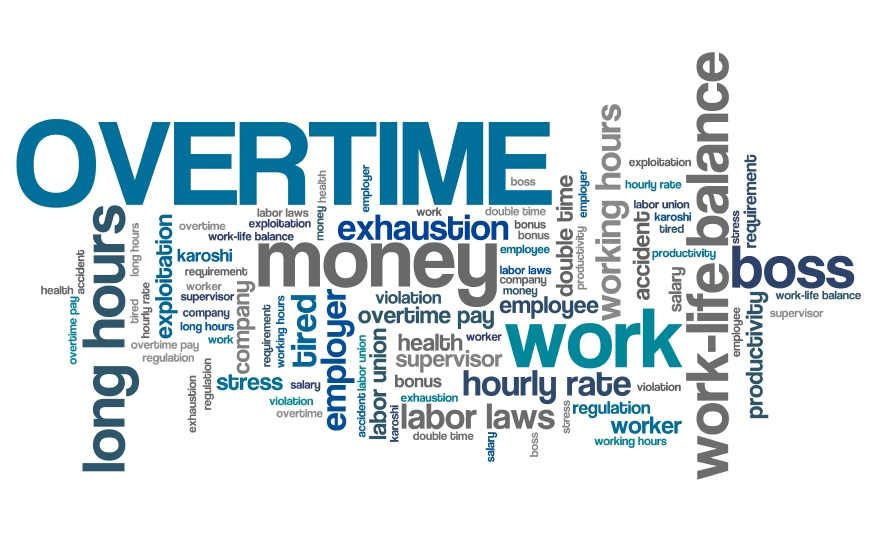In yesterday’s Advisor, BLR Senior Legal Editor Susan Schoenfeld shared an expert’s advice regarding the new proposed overtime rule from the Department of Labor (DOL). Today, more from Schoenfeld on the legal capacity for DOL to make certain changes as well as what changes might surface in the final version of the law.
 |
Schoenfeld received her tips from Tammy McCutchen, former administrator at the U.S. Department of Labor’s Wage and Hour Division, at the Society for Human Resource Management’s (SHRM’s) annual conference.
Wait—Can They Do That?
McCutchen says an argument can be made that under the Administrative Procedures Act (the “APA”—the rules governing the agency’s regulation-making powers) the DOL cannot change the duties test because the DOL has not given the public notice and the opportunity to comment on proposed changes to the test as it is required to do under the APA.
Want to keep up with the latest FLSA regulations, but don’t know where to start? Check out BLR’s guide, Wage & Hour Combo Package. Learn more now!
However, it may be that the DOL can skirt the APA’s rulemaking requirements for notice and comment because it has not stated that it will make no changes to the duties tests, and the DOL has asked for comments on some specific changes. This may be the way in which the DOL is attempting to change the duties test without proposing specific changes in the proposed rule, says McCutchen.
One thing is certain—if the DOL does change the duties test without an opportunity for the public to comment on specific proposed changes, litigation—and lots of it—will follow, says McCutchen.
What Is Next?
McCutchen does not believe there will be many changes between the proposed rule and final rule. So she recommends that employers start preparing for the new regulations now by reading the proposed rule and agency FAQs, reviewing potential FLSA status changes based on the proposed salary increase to $50,440, and communicating the impact of salary increases to business leaders.
Employers should start planning for reclassifications now to be ready when the new rules become effective—something McCutchen predicts will happen in June 2016.
As for the other critical deadlines for the new FLSA rule, McCutchen predicts that after the proposed rule is published in the Federal Register in July 2015, the public comment period on the proposed rule will run for 60 days until September 2, 2015.
Then, after the DOL has an opportunity to consider and address all comments, McCutchen believes that the final rule will be published 180 days later on February 8, 2016, with an effective date of June 28, 2016 (120 days after publication of the final rule).
Is she right? As a leading expert on the FLSA, McCutchen’s guess is as good as any and better than most.
Fair Labor Standards Act compliance is confusing and challenging for even the most savvy HR practitioner. For answers to your toughest wage & hour questions, turn to two management resources that put YOU in control of pay practice challenges and help you uncover policy pitfalls before an aggressive attorney does it for you! Want to learn how to walk the line? Start BLR’s comprehensive guide, Wage & Hour Combo Package.
Comply with the FLSA without going crazy with BLR’s comprehensive guide, Wage & Hour Combo Package. Learn More
Wage & Hour Compliance: Practical Solutions for HR and Wage & Hour Self-Audit Guide provides you with detailed guidance on how to comply with the FLSA and takes you through the most complicated wage & hour issues that HR practitioners encounter. When you’re faced with a supervisor’s travel time question, an employee’s request for comp time, another executive’s suggestion that more assistant managers be deemed exempt from overtime, you’ll find answers in seconds, from a reputable and reliable source.
Wage & Hour Compliance: Practical Solutions for HR and Wage & Hour Self-Audit Guide deliver everything you need to master pay practices and policies—and remain the go-to expert at your organization! You get:
- Real-world examples of wage & hour challenges, and how to solve them
- An overtime exemption audit checklist, so you never make the wrong call
- State-specific charts, for comparing your multi-state obligations
- Sample policies, easily modified to fit your specific preferences
- Key changes to FLSA
- A chart highlighting the differences between the old and new laws
- New overtime requirements
- How the law may directly affect your organization’s wage & hour policies and practices
- Duties tests
- Precise explanations and examples of the Executive, Administrative, Learned Professional, and Creative Professional exemptions
- And much, much more.
